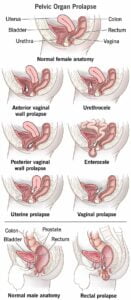Overview of Ambiguous Genitalia
Ambiguous genitalia is an uncommon condition where an infant’s external genitalia do not present clear male or female characteristics. This may involve underdeveloped genitals or features of both sexes. There can be a mismatch between external appearance, internal reproductive organs, and genetic sex.
This condition is classified as a disorder of sex development rather than a disease. It is typically identified at birth or shortly thereafter, which can be a source of significant stress for families. Medical professionals aim to determine the cause of the condition and offer guidance and support for decisions regarding the child’s gender and potential treatments.
Symptoms and Characteristics
Medical teams are usually the first to notice ambiguous genitalia in newborns. In some cases, the condition may be detected prenatally. The severity and characteristics depend on the timing and cause of the developmental interruption.
In Genetically Female Infants (XX Chromosomes)
- Enlarged Clitoris: May appear similar to a penis.
- Labial Closure: Labia may be closed or have folds that resemble a scrotum.
- Palpable Gonads: Lumps that could be mistaken for testes within the fused labia.
In Genetically Male Infants (XY Chromosomes)
- Hypospadias: The urethra may not extend fully to the tip of the penis.
- Small Penis Size: The penis may be unusually small with the urethral opening nearer to the scrotum.
- Testicular Concerns: One or both testicles may be absent from the scrotum, which might appear as a labia.
- Undescended Testicles: The scrotum may be empty, resembling a labia, potentially accompanied by a micropenis.
Causes of Ambiguous Genitalia
Ambiguous genitalia primarily arises from hormonal irregularities during gestation that disrupt the development of the fetus’s sex organs.
Formation of Sex Organs in the Womb
The genetic sex of a baby is determined at conception via sex chromosomes. The mother’s egg carries an X chromosome, while the father’s sperm may carry either an X or a Y chromosome. An XX combination results in a genetic female, whereas an XY combination results in a genetic male.
Both male and female sex organs originate from identical embryonic tissue. The development into male or female organs is contingent on the chromosomes and the presence or absence of male hormones.
- In Genetic Males (XY): A specific region on the Y chromosome initiates the formation of testicles, which then produce male hormones, leading to the development of male genitals.
- In Genetic Females (XX): Without a Y chromosome and the influence of male hormones, the genitals develop as female.
- Chromosomal Anomalies: Sometimes, chromosomal irregularities complicate the determination of genetic sex.
Mechanisms Leading to Ambiguous Genitalia
Disruptions in the developmental process can cause a discrepancy between the external genital appearance and the internal sex organs or genetic sex (XX or XY).
- In Genetic Males: A deficiency in male hormones can lead to ambiguous genitalia.
- In Genetic Females: Exposure to male hormones can result in ambiguous genitalia.
- Genetic Mutations: Certain gene mutations can affect fetal sex development.
- Chromosomal Abnormalities: Anomalies like missing or extra sex chromosomes can also lead to ambiguous genitalia.
- Undetermined Causes: Sometimes, the cause remains unknown.
Specific Causes in Genetic Females
- Congenital Adrenal Hyperplasia: This condition can cause the adrenal glands to produce excess male hormones (androgens).
- Prenatal Hormonal Exposure: Drugs containing male hormones or conditions causing hormonal imbalances in the mother can masculinize developing female genitals.
- Maternal Tumors: In rare cases, a maternal tumor may secrete male hormones.
Specific Causes in Genetic Males
- Impaired Testicular Development: This may stem from genetic issues or unknown factors.
- Androgen Insensitivity Syndrome: Here, the developing genital tissues do not respond to male hormones from the testes.
- Testosterone-Related Abnormalities: Structural issues with the testes, testosterone production problems, or receptor issues can affect testicular function.
- 5a-Reductase Deficiency: A defect in this enzyme hampers normal male hormone production.
Ambiguous genitalia may also be part of rare, complex syndromes involving multiple organ systems.
Risk Factors for Ambiguous Genitalia
The development of ambiguous genitalia may be influenced by family history, as many related disorders are hereditary due to genetic anomalies. Notable risk factors include:
- Unexplained Infant Deaths: Early infancy losses without clear causes.
- Reproductive Issues: Infertility, absence of menstruation, or hirsutism in females.
- Genital Irregularities: Presence of genital abnormalities within the family.
- Pubertal Anomalies: Atypical physical development during puberty.
- Congenital Adrenal Hyperplasia: This is a set of genetic disorders affecting the adrenal glands.
Individuals with a family history of these factors should consider medical consultation prior to conception and may find genetic counseling beneficial.
Complications Associated with Ambiguous Genitalia
The complications arising from ambiguous genitalia can vary, including:
- Infertility: The ability to conceive children is contingent on the specific diagnosis. For instance, genetic females with congenital adrenal hyperplasia generally retain the potential for pregnancy.
- Cancer Risks: Certain sex development disorders carry a heightened risk for specific cancers.
| Section | Key Points |
|---|---|
| Overview | – Rare condition with indeterminate external genitals<br>- Not a disease, but a disorder of sex development<br>- Usually identified at or shortly after birth |
| Symptoms | – Characteristics vary based on genetic sex (XX or XY)<br>- May include enlarged clitoris, closed labia, or undescended testicles |
| Causes | – Hormonal abnormalities during pregnancy<br>- Chromosomal and genetic factors<br>- Environmental influences |
| Risk Factors | – Family history of genital abnormalities or related genetic disorders<br>- History of unexplained infant deaths or reproductive issues |
| Complications | – Potential infertility<br>- Increased risk of certain cancers |
| Diagnosis | – Typically diagnosed at birth<br>- Involves family and medical history, physical exam, and various tests |
| Treatment | – Goal is psychological and social well-being, sexual function, and fertility<br>- May involve a team of specialists, medications, and surgery |
| Coping and Support | – Mental health support for families<br>- Importance of professional counseling and support groups |
| Preparing for Appointment | – Gather family history<br>- Bring support person<br>- Prepare questions for the doctor |


